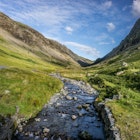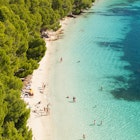
Jan 9, 2026 • 14 min read
Build your perfect England trip with these driving routes and itineraries that take you to the best of the country.

Jan 9, 2026 • 14 min read
Build your perfect England trip with these driving routes and itineraries that take you to the best of the country.

Jan 9, 2026 • 12 min read
Nothing will fully prepare you for your first encounter with the statues of Rapa Nui (Easter Island). Here's how to visit this remote island near Chile.

Jan 9, 2026 • 8 min read
Mallorca is famed for its wonderful collection of glorious sandy beaches and rocky coves – find your way to these top spots.

Jan 8, 2026 • 5 min read
Barcelona has blossomed into one of Europe's most beloved food destinations. Have a memorable time eating epic meals as you travel around this Spanish marvel.

Jan 8, 2026 • 9 min read
With even temperatures, sunny skies, and dry weather, the Florida Keys are extra fabulous in the winter months.

Jan 8, 2026 • 8 min read
Fabled Angkor Wat is a bucket-list destination for anyone who wants to be dazzled by human achievement. Here’s a guide to visiting this sensational site.

Jan 8, 2026 • 11 min read
The Great Migration of wildebeest and zebra through the Serengeti in Tanzania is the ultimate wildlife spectacle. Here's how one writer experienced it.

Jan 8, 2026 • 7 min read
Celebrate the changing of the seasons in Siem Reap with this guide to climate, crowds and local events.

Jan 8, 2026 • 9 min read
Experience the best of Mardi Gras – with parades, parties, music and lively celebrations – at these top carnival destinations.

Jan 8, 2026 • 10 min read
Turn your attention skyward: 2026 may be the best chance to spot the elusive aurora borealis until the 2030s. Don't miss out with this guide.

Jan 8, 2026 • 6 min read
Packed with arts venues, green spaces, historic districts and world-class restaurants, Lyon is a traveler’s dream. Here are the best things to do there.

Jan 8, 2026 • 9 min read
Discover top things to do in Tanzania, from wildlife-filled safaris and Kilimanjaro treks to Zanzibar beaches, underwater stays and cultural experiences.

Jan 7, 2026 • 14 min read
Plan your next trip to England with this list of the greatest hits, from historic sites to happening cities via the coast and countryside.

Jan 7, 2026 • 7 min read
In Morocco, you'll find everything from surfing and hiking to meditation and yoga.

Jan 7, 2026 • 6 min read
Heading into 2026, these photos push us to travel with our senses first – traveling not just to see places, but to feel them.

Jan 7, 2026 • 6 min read
Follow these travel tips to plan your visit to Puglia in southern Italy and embrace the rhythm of local life.

Jan 7, 2026 • 5 min read
Traditional medina homes have been transformed into boutique hotels across Morocco, giving visitors a taste of riad living.

Jan 7, 2026 • 8 min read
Souqs (markets) are integral to daily life in Morocco. Shop, browse, bargain and explore with this guide.

Jan 7, 2026 • 6 min read
If a March trip to Ireland is a long shot, these St Patrick's Day parties, parades and celebrations are the next best thing.

Jan 7, 2026 • 6 min read
Panama is a destination offering a mix of cosmopolitan cities, secluded beaches and outdoor adventure. Here's how to see it and save.

Jan 7, 2026 • 8 min read
Seoul boasts one of the best public-transit networks in the world. Here are all the best ways to get around Seoul.

Jan 7, 2026 • 7 min read
Food in Thessaloniki blends Greek, Ottoman and Balkan influences, among others. Find the must-try favorites in this roundup of the city's specialities.